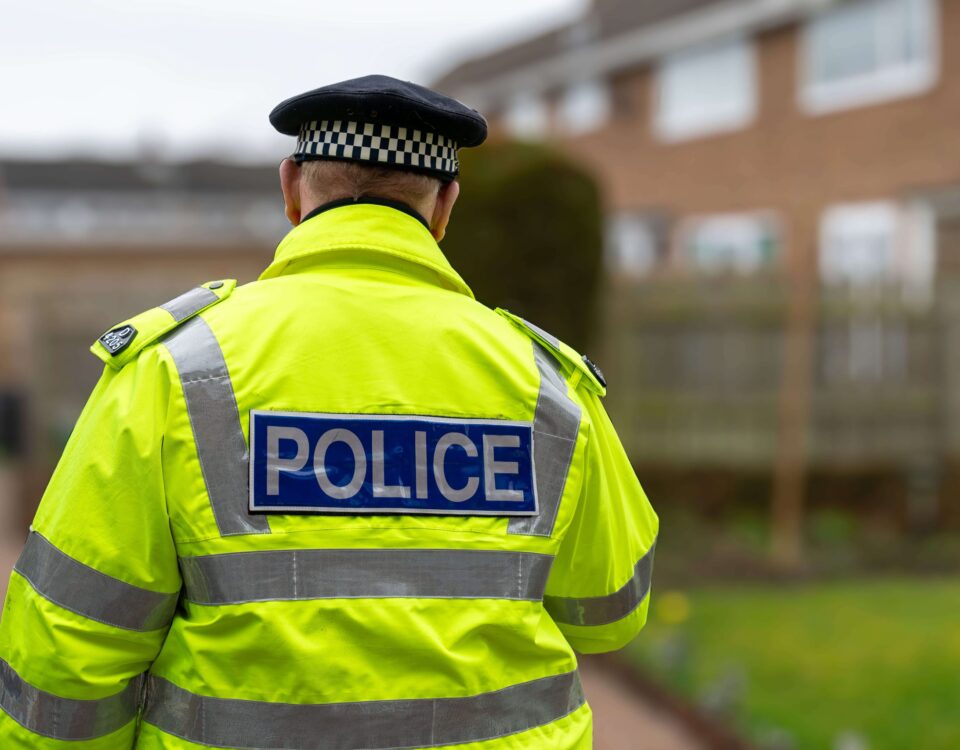Mental Health Crisis and Suicide Prevention
Call or Text 988
For immediate help with a mental health crisis, call or text 988 for the Suicide & Crisis Lifeline.
It's important to understand what a mental health crisis is, be aware of the warning signs, and know how to help. The first step in addressing any type of mental health crisis is identifying when someone is in crisis and providing support.
Overview
What Is a Mental Health Crisis?
A mental health crisis is a situation where someone's thought processes, emotional responses, and physical actions or behaviors put themselves or others in danger and/or leads to the inability to care for themselves. This can happen to anyone at any time. It's important to be able to recognize a mental health crisis and know how best to help.
Warning Signs of a Mental Health Crisis
Mental health crises are unique to the individual. There are many different factors that can contribute to experiencing a crisis, often related to significant stressors such as trauma, loss, and financial hardship. Feeling overwhelmed or out of control, especially of one’s feelings, thoughts, or behaviors are key features of a mental health crisis across ages. It is important to recognize them and know how to help people in crisis.
Mental Health Crisis Warning Signs in Adults
Mental health crisis varies from person to person, however it’s important to recognize common warning signs so you can potentially help improve the outcome.
- Excessive worry or fear
- Constantly feeling sad or low
- Difficulty concentrating
- Extreme mood changes
- Prolonged irritability or anger
- Avoiding social activities and isolating oneself
- Oversleeping or having difficulty sleeping
- Changes in appetite
- Increased use of alcohol or drugs
- Thinking about suicide
- Inability to carry out daily activities or handle daily problems and stress
Mental Health Crisis Warning Signs in Teens and Children
Children and teens may not have the language skills yet to label or describe their experiences and therefore, their distress may be expressed through their behavior.
Look for signs such as:
- Refusing to eat or eating constantly.
- Frequent nightmares.
- Changes in school performance.
- Sudden or extreme mood changes.
- Feeling extremely sad.
- Difficulties understanding or relating to others.
- Recurrent agitation or aggression.
- Excessive worrying.
- Avoidance of sleep, school, or social outings.
- Self-injury or suicidal behaviors.
- Uncharacteristically unusual behavior.
Situational signs:
- Recent break-up with boyfriend/girlfriend/significant other
- Any event that may cause public embarrassment or shame
- Bullying, be it online or face to face
- Failure to achieve important goal or milestone
- Significant changes to their family unit or relationships within the family
Suicide Warning Signs in Adults
Adults may show signs such as:
- Threatening to or talking about wanting to hurt or kill oneself.
- Looking for ways to kill oneself by seeking access to firearms, available pills, or other dangerous means.
- Talking, writing, or looking up on the internet about death, dying, or suicide when these actions are out of the ordinary for the person or if the person has previously thought about or talked about wanting to die or suicide.
- Feeling hopeless.
- Feeling rage or uncontrolled anger, as well as seeking revenge.
- Acting reckless or engaging in risky activities — seemingly without thinking.
- Feeling trapped — like there's no way out.
- Increasing alcohol or drug use.
- Withdrawing from friends, family, and society.
- Feeling anxious, agitated, or unable to sleep
- Sleeping all the time.
- Experiencing dramatic mood changes.
- Seeing no reason for living or having no sense of purpose in life.
- Giving away possessions.
- Saying concerning statements such as: “I just can't take it anymore" ; “All of my problems will end soon" ; “No one can do anything to help me now."
Suicide Warning Signs in Children and Teens
Children and teens might not be able to fully express their feelings verbally like adults, and often communicate distress through their actions. It’s important for parents and guardians to look for suicide warning signs through their behavior. Looks for signs such as:
- Feelings of hopelessness or despair.
- Feelings or anxiety or depression.
- Talking about suicide or wanting to die or disappear.
- Talking, writing, or drawing about death.
- Giving away belongings.
- Withdrawing from friends, family, or social situations.
- Having dramatic mood changes.
- Engaging in reckless behavior.
- Using alcohol or drugs.
- Change in appetite.
- Sleeping too much or having difficulty sleeping.
How to Help
What Is 988?
The 988 Suicide & Crisis Lifeline is a national program to help people who are having a mental health crisis or who know someone who is. The lifeline is available 24 hours a day, seven days a week, 365 days a year.
By calling 988, you can speak to someone who will assess your situation and connect you with local resources to get you the help you need. You also can find information and chat online at 988lifeline.org.
When you call 988, you are directed to the closest crisis center based on your area code. This gives you the best chance to get connected to help from trained volunteers and mental health professionals close to you.
What to Do if Someone Is Experiencing a Mental Health Crisis or Showing Suicide Warning Signs
#BeThe1To — an effort by the National Action Alliance for Suicide Prevention and the 988 Suicide & Crisis Lifeline — outlines five action steps you can take to help someone experiencing a mental health crisis, or having suicidal thoughts or actions.
1. Ask.
Asking the question, “Are you thinking about suicide?" communicates that you're open to talking about the subject in a nonjudgmental way. Asking can open the door to dialogue about their emotional pain. Other questions can include, “How do you hurt?" and, “How can I help?"
Be sure to listen to their answers and take them seriously. Studies show that asking at-risk persons if they're thinking of suicide does not increase suicides or suicidal thoughts. In fact, studies show that talking about suicide may reduce suicidal thoughts or actions.
2. Be There.
This could mean being physically present, talking on the phone, or any other way you can support the at-risk person. Follow through on any forms of support you offer them. If you can't be there in person, help them develop ideas for others who might be able to help.
Increasing the person's connections to others and limiting their isolation (both in the short and long term) can protect against suicide.
3. Help Them Keep Safe.
Establish their immediate safety. Have they already done anything to try to kill themselves before talking with you? Have they made a plan or thought about how they would do it? Do they have access to firearms or other methods?
Knowing the answers to these questions can tell you a lot about the immediacy and severity of danger the person is in. The more steps and pieces of a plan that are in place, the higher their risk. Or, if they have immediate access to a firearm and are very serious about attempting suicide, then extra steps — such as calling 911 or driving them to an Emergency Department — might be necessary.
4. Help Them Connect.
Establish a safety net of ongoing support that the at-risk person can connect with when they find themselves in crisis. Helpful resources include:
- The 988 Suicide & Crisis Lifeline. Dial 988.
- The National Alliance on Mental Health (NAMI) Helpline. Call 800-950-6264, or text "Helpline" to 62640.
Community support, mental health professionals, and other programs also may be available in your area. Help the person develop a safety plan of who to call and what to do if they start to have severe thoughts of suicide.
5. Follow Up.
After your contact, follow up with them to see how they're doing and make sure they've connected with immediate support systems. Leave a message, send a text, or give them a call. At-risk individuals are less likely to follow through with suicidal actions when they have a constant connection with someone. It's important to maintain communication with the individual and show support.
The 988 Suicide & Crisis Lifeline (formerly known as the National Suicide Prevention Lifeline) offers 24/7/365 call, text, and chat access to trained crisis counselors who can help people experiencing suicidal thoughts or actions, substance use, mental health crisis, or any other kind of emotional crisis. 988 is also available for people who are worried about a loved one who might need crisis support.
988 was created to improve access to mental health crisis services so that more suicide and mental health-related emergencies could be prevented, and appropriate services dispatched for support. While 988 and 911 both serve as numbers to address emergencies, 911 focuses on public safety-related emergencies where Emergency Medical Services (EMS), fire, or police could be dispatched. 988 provides mental health support in moments when an individual in crisis needs help.
Call 911 if it's an emergency and you need immediate help.
When you call 988, you are routed to your nearest Lifeline crisis center based on your area code. You are then quickly connected to a trained crisis counselor who listens, understands, and provides support for the crisis that you or a loved one may be experiencing. The counselor often will share resources, if needed, to support your wellbeing.
When you text 988, your message is routed to a group of Lifeline crisis center counselors. Once you are connected, a counselor will listen to you and work with you to resolve the crisis that you or a loved one is facing.
Chat services are available by visiting 988lifeline.org/chat. When you chat 988, you will fill out a pre-chat survey to identify your main area of concern. Then, you are connected to a crisis counselor who will listen to you, provide support, and share helpful resources.
Yes. If you know someone who might be in crisis, showing signs of emotional distress, or having suicidal thoughts, you can call, text, or chat 988 on someone’s behalf.
Yes. According to the Substance Abuse and Mental Health Services Administration (SAMHSA), numerous studies have shown that many callers feel less depressed, less suicidal, and more hopeful after speaking to a crisis counselor.
If you or someone you know is having thoughts of self-harm or suicide, get help right away. The following resources offer trained mental health counselors. They will listen, provide support, and connect you with additional resources, if necessary:
- Suicide & Crisis Lifeline: Call 988 or chat online at 988Lifeline.org. Services are also available in Spanish at 1-888-628-9454 and for those who are deaf or hard of hearing through online chat and text telephone (TTY).
- Crisis Text Line: Text HOME to 741741 or chat online.
- Veterans Crisis Line: Call 1-800-273-8255 and press 1.
Call 911 if it's an emergency and you need immediate help.
There are many things you can do to help if you think your child is struggling with their mental health. First, it’s important to recognize any potential warning signs. Children and teens may not have the language skills yet to label or describe their experiences, and depression and anxiety also can cause physical problems. Therefore, they may express their distress through their behavior or complaints.
You know your child best, so trust your instincts. If you are concerned, start by asking them how things are going and how they are feeling. It’s also helpful to reach out to other trusted adults in your child’s life, like teachers or sports coaches, so you gather a more well-rounded view of their behaviors. If your child’s behavior is impacting activities in their daily life, it’s also important to reach out to their pediatrician for additional help.
If you have concerns that your child may be struggling with their mental health, talking to their primary care provider is a great first step. Their medical provider can help you determine if your child may be experiencing depression and/or anxiety, or identify any other things that could be contributing to your child’s symptoms. You and your child’s doctor can discuss any need for further evaluation from a psychologist, treatment plans, referrals to specialty care, and additional resources.
Depression is a mental health disorder that causes a persistent feeling of sadness and loss of interest in activities. It causes severe symptoms that impact the way you feel, think, and go about your daily activities. To be diagnosed with depression, symptoms must be present in a person for at least two weeks. It’s important to seek treatment for depression right away so symptoms do not worsen.
Anxiety is a feeling of intense, excessive, and persistent worry and fear about everyday situations, including ordinary routines. Individuals facing anxiety might show signs like heavy breathing, have a rapid heartbeat, sweat, have difficulty concentrating, or feel fatigued. Anxiety can be difficult to control at times, and is important to get medical attention to treat anxiety.
Substance use and addiction can increase a person’s risk of developing a mental health disorder because certain drugs can alter the user’s brain structure and function and impair a person’s decisions and judgement. Those who have a mental health disorder are also at a higher risk of developing a substance use disorder (SUD).
The National Institute of Mental Health (NIMH) reports common factors why SUD and mental health disorders can co-occur: 1.) SUDs and mental health disorders can run in families and be passed generationally. 2.) Environmental factors like stress and trauma, and social determinants of health contribute to a person’s likelihood of developing a SUD or mental health disorder. 2.) People with mental health disorders like post-traumatic stress disorder (PTSD) or depression are more likely to use drugs or alcohol to cope. 3.) Substance use can change the brain structure, and increase the chance of that user developing a mental health disorder.






